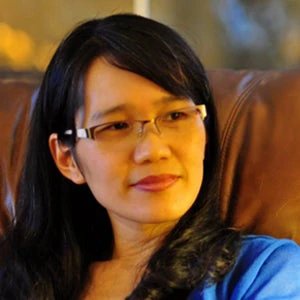
If you ask someone what would bring him or her to Bangkok, you would likely hear that they are drawn by the bold and deliciously spicy food, the wonderfully cheerful local people and the bright sunshine of this amazingly lively city. But what brought nearly forty anti-corruption practitioners from fifteen countries in the East Asia and Pacific region, from South Africa, and from the World Bank, DFID and UN agencies in late March to the capital, was their interest in learning how different financial disclosure regimes have worked elsewhere and how to make them more effective tools in fighting corruption.
A regional conference in Bangkok on financial disclosure (asset declarations) was organized by the World Bank’s Financial Market Integrity and the Stolen Asset Recovery Initiative (StAR). The conference enabled cross-country sharing of information on financial disclosure by public officials; sharing between more advanced systems, like those in South Korea and Thailand, very new systems like in Timor-Leste, and systems that are somewhere in between like those in Vietnam and China. It was an interactive conference with each country’s representatives eager to share their own experience, the difficulties they have faced and their desire to learn from each other. For Vietnam, which is now reviewing the five years of implementation of its Anticorruption Law, there are some good messages to take home.
It is imperative for countries to embark on their financial disclosure journey in order to tackle corruption. The time for the start varies from country to country, but their motives are the same: reducing corruption, strengthening integrity among public officials, and building better institutions as a country develops.
Yet, there is no one-size-fits-all system of financial disclosure for all countries (different contexts, different institutions, etc.), despite the temptation to view the very advanced systems of OECD countries as models. The financial disclosure systems of countries participating in the conference were never perfect at the beginning (and aren't perfect now!)—rather, they evolved over time and, indeed, they worked better when there was flexibility for adaptation.
Many countries have faced the same challenge when embarking on their systems of financial disclosures: there are just too many filers and only a limited ability to verify the information filed. The question is whether to try to construct a financial disclosure regime on a widespread scale or to do it with a more targeted focus. The latter option was not chosen by many countries in the region. While there is not yet a consensus on which option is better, there is generally an agreement that a good data management system is essential; one that can host a sizeable but manageable number of filers, allowing better verification and helping keep track of warning signals generated by the system itself. South Korea, for instance, has been able to establish a regime that systematically sends alerts whenever there is a discrepancy in a filer’s asset declaration with other property’s registries of that filer, thus prompting many investigations to take place.
Learning from experience and understanding the environment in which each system operates is necessary. Given limited resources and potential inhibitors and facilitators of any financial disclosure regime, it is important that each country set out clearly a strategic vision of where to go and what to do with the financial disclosure system for public officials, as part of a clear anti-corruption strategy. The experiences described at the conference showed that the existence of a disclosure regime would not solve corruption in and of itself. There are no panaceas when it comes to tackling corruption. Yet, it was encouraging to see that public disclosure of financial information of public officials helped enable lifestyle checks from media and civil society organizations, thus helping anticorruption agencies to detect corruption, and deterring it even before it occurs. For Vietnam, which has been implementing its asset declaration regime for four years now, there are several of implications. With about 600,000 asset declarations filed annually, it has only been possible to verify 0.1 percent of the total filings, and as the financial disclosures are not yet disclosed to the public, the effectiveness of this anti-corruption measure is yet to be proved. Indeed, the World Bank’s own Vietnam Development Report 2010—Modern Institutions argued that the system would be more effective if declarations were made public for high level officials and if the declarations were restricted to more manageable numbers. The government of Vietnam has recognized the need to take bolder anti-corruption measures in the coming years, including the recent and very welcome decision to disclose asset declarations at the office of public incumbents. What will be additional bolder steps that reinforce commitment to integrity? Will disclosure of asset declarations to the public, in part or in full, be among the steps? The bold cuisine, whether it is the strongly spicy Tom Yum Kung (which could be shocking for first time taster!)...or the tastily blended Khao Niaow Ma Muang (mango sticky rice dessert), and bright sunshine that attract people to Bangkok are the fitting metaphor for this conference—boldly blended ideas and bright sunshine are needed for Vietnam’s anticorruption program, as well. More on Governance in Vietnam.


Join the Conversation